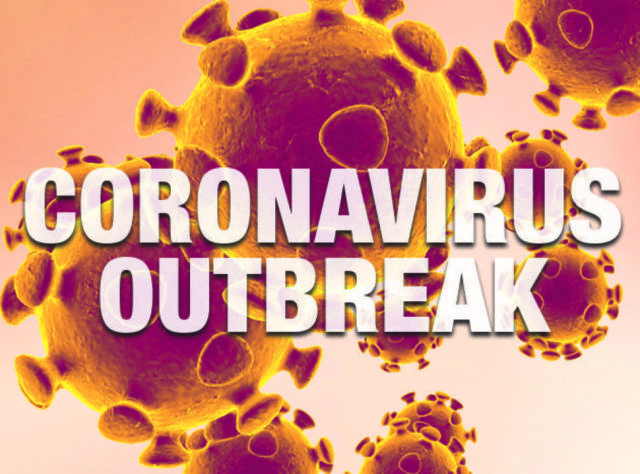Predictable precursors to the coronavirus are lessons for humanity
“BLACK swans” are high-impact, low-probability events that are hard to predict. Covid-19 (or something similarly destructive), however, was not only predictable, it was highly predictable.
Of course, the contagion effect is impossible to predict without good data, which has sparked debates over what an optimal response might look like. Stanford epidemiologist John Ioannidis writes, for instance, that: “In the absence of data, prepare-for-the-worst reasoning leads to extreme measures of social distancing and lockdowns … One of the bottom lines is that we don’t know how long social distancing measures and lockdowns can be maintained without major consequences to the economy, society, and mental health. Unpredictable evolutions may ensue, including financial crisis, unrest, civil strife, war and a meltdown of the social fabric.”
Indeed, lockdowns may be a necessary strategy precisely because we can’t predict the spread. Exponential growth initially looks deceptively linear. Nonetheless, there is no one-size-fits-all answer and each country has to assess the risks and opportunity costs of its respective policy decisions.
For South Africa, a lockdown may build extreme tail risks into the system, especially given that people in informal settlements live in such close proximity to each other.
What lockdowns do, though, is create space for thinking about how to avoid this kind of catastrophe – a black swan in plain sight – in the future. We must consider the causal factors behind Covid-19 and take every possible action at a global level to prevent similar catastrophes from re-occurring.
Writing about Severe Acute Respiratory Syndrome Coronavirus (Sars-CoV) in 2007, Vincent Cheng and his co-authors noted that rapid economic growth in southern China led to increased demand for animal proteins, including those from exotic game food animals:
“Large numbers and varieties of these wild game mammals in overcrowded cages and the lack of biosecurity measures in wet markets allowed the jumping of this novel virus from animals to humans … The presence of a large reservoir of Sars-CoV-like viruses in horseshoe bats, together with the culture of eating exotic mammals in southern China, is a time bomb.”
Fast-forward to last year, and we discover pangolin – the most traded endangered animal on the planet – as the most likely intermediary host for the transmission of Covid-19 in Wuhan, China, again at a wet meat market.
Dennis Carroll, the world’s leading epidemiologist on zoonotic spillover – the transmission of pathogens from non-human animals to humans – reminds us that “whatever future threats we’re going to face already exist; they are currently circulating in wildlife. Think of it as viral dark matter”.
The disease was more than predictable and yet the world is doing nothing to establish safe rules and regulations to prevent spillover risk. We’ve so disrupted the ecological systems on which we ultimately depend that we’re at constant risk of new infections arising: “Zoonotic diseases are an emerging problem. But we as a society don’t invest in things that are not kicking our door down.”
Covid-19 is kicking our door down. What does it teach us?
Life is unlikely to return to “normal” hereafter, as global financial meltdown is imminent. It is a perfect opportunity to remember that our attitude towards the planet created this knotty problem. Minimising future risk requires that we tread more lightly on the delicate ecological systems that sustain us. We are at risk of overstepping our planetary boundaries, which has created impending climate catastrophe.
The Covid-19 shutdowns have the inadvertent effect of allowing some ecologies a chance to recover, but it would be a tragedy if we attempted to go back to business-as-usual, the scenario under which we’re rapidly careening over the 1.5°C warming limit, thanks to populism and lack of global co-operation.
More specifically, but part of the same disease, the world has largely embraced a high-risk “sustainable use” approach to wildlife conservation.
Nowhere, perhaps, is this more evident than in South Africa’s very own captive lion breeding industry. More than 8 000 lions are bred in captivity for human interaction, captive-origin hunting and the global lion bone trade.
The government, for instance, allocated a quota for 800 skeletons to be exported in 2017 and 2018.
A 2019 high court judgment ruled, however, that these quotas were illegal and constitutionally invalid (retrospectively) because welfare considerations are routinely violated in the industry. Nonetheless, the breeding continues.
Beyond the welfare violations, criminality and potential damage to the country’s tourism reputation, South Africa is also at risk of exporting zoonotic diseases to Asian consumers purchasing tiger bone wine and other such products (often made from lion bones).
Local workers are similarly at risk of contracting diseases such as feline TB, given that there are no regulations governing the slaughter of captive lions for export. Transmission of disease occurs precisely during slaughter, when people are exposed to bodily fluids, blood and secretions. These risks have been outlined in a letter sent by the EMS Foundation to the Minister of Environmental Affairs.
China’s February 2020 ban of wildlife markets should sound a death knell for South Africa’s lion bone industry. More than that, Covid-19 should teach us to abandon the belief that we can commoditise and consume everything.
Our exponential encroachment into sensitive ecosystems is killing
us.
Trading in wildlife products is just one symptom of our addiction to “consumptive use” and it has to change. If we don’t, there’s plenty of viral dark matter hanging around willing to teach us again.
– Dr Harvey is a freelance independent economist who works with The Conservation Action Trust.








